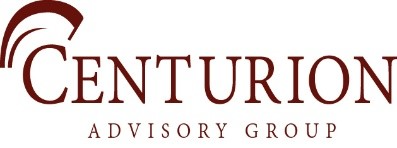Three Pillars
Over the years, I’ve had the opportunity to study many financial statements. One of the questions I’ve asked myself as I conduct these annual evaluations is simply “What does it take to create a strong, well-built, all-weather financial statement that grows consistently or at least remains stable in the off years, year over year? Given a source of cash flow, a strong financial statement is built on the pillars of cash reserves, U.S. equities, and real estate. Here’s the detail.
Cash Flow Engine
Step One? Each of us needs a cash flow engine. That is, some source of cash flow which we can consistently direct to building our financial statement. Some of us do this through business ownership. Others of us accomplish this by putting our gifts and talents to work for an employer. Regardless of the source of the cash flow, the key to success is to manage personal expenses such that there is a spread between personal cash needs and available inbound cash flow.
The cash needs I reference include both fixed and discretionary monthly and annual operating expenses, capital expenditures for homes, autos, and other use assets, taxes, and charitable giving. Inbound cash flow needs to exceed the need for cash for the referenced items.
Cash Reserves
Reserves come in two flavors – general and allocated. General reserves are the 60 to 90 day operating reserves focused on by the consumer finance gurus. While 60 to 90 days of reserves is good general advice, we have found that the actual number is specific to the household and is a function of comfort level and personal experience. Some want a specific dollar amount while others prefer a specific number of months in reserve.
What do I do? I keep a checking and savings account at one bank which I use for paying monthly household expenses. Between the two accounts, I have 60 days of operating reserves. In a separate account at a different bank, I maintain twelve months of operating reserves. This is a high-yield money market account and in order to access these funds, I must actually show up at the bank. I have no checks or debit cards attached to this account and I want none.
Allocated Reserves?
Yes. Those are the dollars which will or could be put to work within the next 24 to 48 months. Common uses of these funds is for homes and autos as well as a cash reserve for strategic investment. I hold these dollars in high-yield money market accounts.
The common types of accounts used for general and allocated reserves are checking, savings, and money market accounts, as well as CD’s. We also include in this category items such as life insurance cash values and short-term bonds. Our expected annualized rate of return on these assets is 2% to 4%.
U.S. Equities
We have written about this in the past so will spend little time here. Domestic equities, specifically dividend-paying stocks whose shares are purchased when prices are low relative to yield, is a critical pillar of long-term wealth building. Return components include inflation, sentiment, and dividends. The minimum hold period is five years though we suggest you think in terms of a ten year or longer holding period. Our expected annualized rate of return on these assets is 8%.
Investment Real Estate
By this, we are not referring to real estate mutual funds or ETFs. We are referencing direct ownership of investment real estate. This asset class is less common for several reasons. First is the cost of entry. Second is that it generally requires active management. Third is lack of liquidity. However, for those who have the cash and the temperament, investment real estate can generate very tax-efficient cash flow and is a solid inflation hedge. The minimum holding period is, in our opinion, at least seven years and often much longer. Our expected annualized return starts in double digits and is comprised of current cash flow, rent increases, and capital gains, the last of which would only be realized on sale, if then. Given the nature of the asset, this is a more complex calculation.
Are there other options than these three? Yes. Though very few investors need to consider the following two options.
Private Debt
This is non-commercial lending, often between individuals. Rates and terms are specific to the deal and in many cases, such private debt is secondary to commercial debt. The primary consideration, perhaps the only consideration, is knowing those with whom you are in business. Interest rates on private debt are often in the 10% to 15% range annually. Hold time can vary but three to seven years is common. In the real estate world, this type of lending is called hard money lending.
Private Equity
For almost all investors, when they have the opportunity to invest in private placements, the best approach is to “just say no”. Under no circumstances should anyone invest lifestyle money in private equity. What is lifestyle money? It is money that if lost or not returned, will have a negative impact on your lifestyle. Yes, we have evaluated and run due diligence on private equity opportunities for years. And how many have I invested in, outside my core business? Exactly one. Target annualized return starts at 25%. I won’t spend any meaningful time running due diligence unless proformas can legitimately show a 35% annualized return. Hold period? Doesn’t really matter. Just roll with it.
That is our nickel’s worth today.
Thank you for making time to read our ramblings and until we see you again, wishing you only the best.

